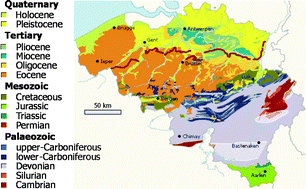By Pui Sai Lau, Web Writer
 For many decades, natural radioactive elements have been used to date the age of minerals and rocks, and also trace the geological origins of archaeological, organic and inorganic materials. Various methods have been explored to measure radioisotopes in often complex samples and retrieve information that may otherwise be lost from possibly eons ago. Patrick Degryse, Frank Vanhaecke, the new Chair for JAAS and others from Belgium have recently demonstrated a modern-day application of strontium isotopic analysis. The team has forensically identified human remains by determining the 87Sr/86Sr ratio of bone and tooth enamel using multi-collector ICP-mass spectrometry. Read more about their exciting discovery below!
For many decades, natural radioactive elements have been used to date the age of minerals and rocks, and also trace the geological origins of archaeological, organic and inorganic materials. Various methods have been explored to measure radioisotopes in often complex samples and retrieve information that may otherwise be lost from possibly eons ago. Patrick Degryse, Frank Vanhaecke, the new Chair for JAAS and others from Belgium have recently demonstrated a modern-day application of strontium isotopic analysis. The team has forensically identified human remains by determining the 87Sr/86Sr ratio of bone and tooth enamel using multi-collector ICP-mass spectrometry. Read more about their exciting discovery below!
Strontium isotopic analysis as an experimental auxiliary technique in forensic identification of human remains
Patrick Degryse, David De Muynck, Steve Delporte, Sara Boyen, Laure Jadoul, Joan De Winne, Tatiana Ivaneanu and Frank Vanhaecke
Anal. Methods, 2012, Advance Article
DOI: 10.1039/C2AY25035G











